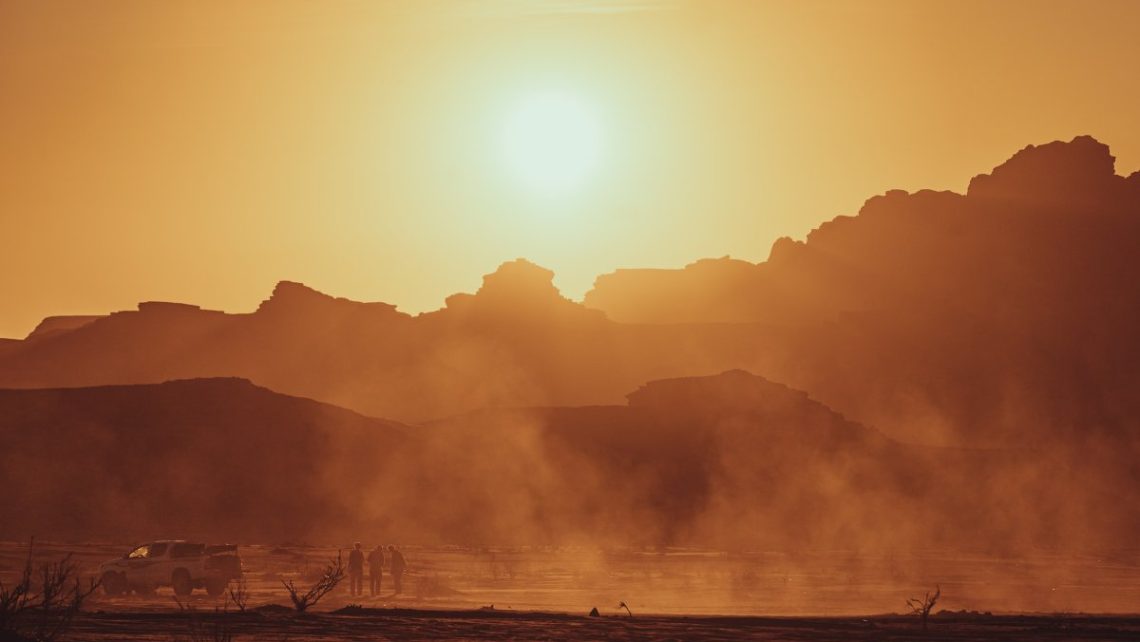
How to Plan a Trip to Jordan (2024): 5, 7 & 10 Day Jordan Itineraries
If you’re reading this, chances are, you’re trying to find out how to plan a trip to Jordan. This magical Middle Eastern land offers a combination of ancient history, amazing landscapes, and warm hospitality, and has every reason to be on top of your bucket list.
You’ll probably already be familiar with the Capital city of Amman, the lost city of Petra, the Mars-like settings of Wadi Rum, or the Dead Sea. Be sure, that this country can satisfy every traveler’s taste.
In this guide, I have covered everything you need to know to plan and execute a memorable trip to Jordan. From the basics like safety and visa requirements to itineraries for 5, 7, or 10 days, I’ve got everything included.
So, pull out your notepad and get ready – your journey to Jordan begins here!
A Little Bit of History
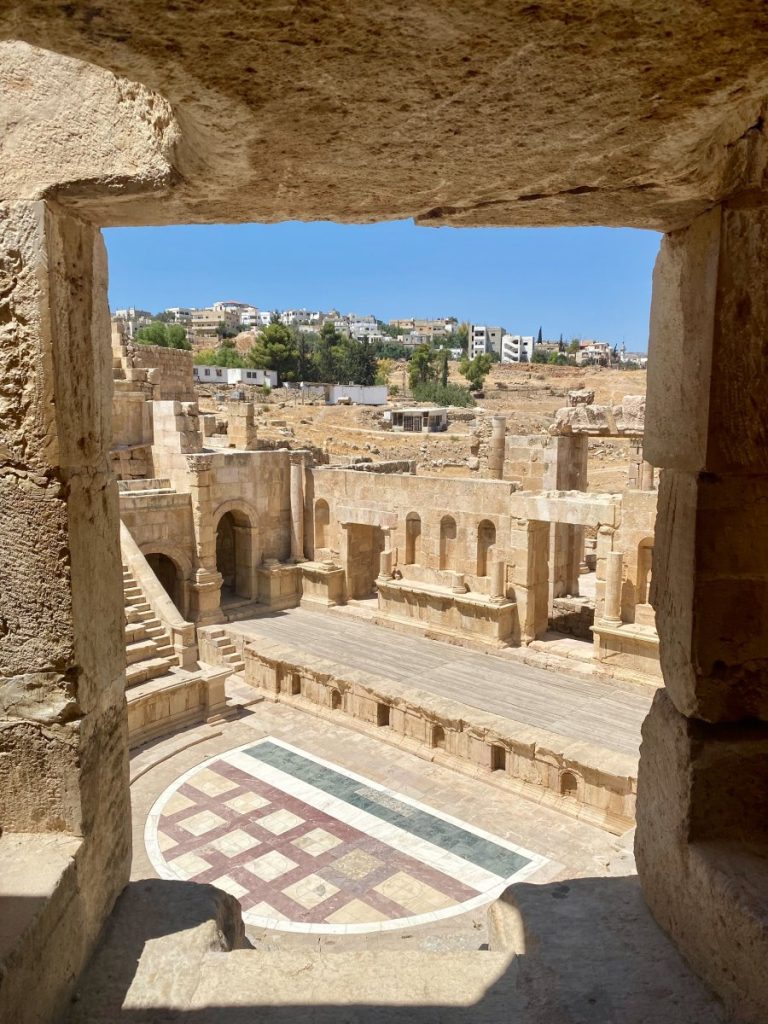
Jordan, located at the crossroads of Asia, Africa, and Europe, has been home to some of the world’s earliest civilizations, including the Nabateans, who built the famous city of Petra.
Jordan was later part of several empires including the Byzantine and the Ottoman Empire. The Byzantine period saw the construction of many churches and mosaics, some of which can still be seen today. The Ottoman rule, which lasted from 1516 to 1918, had a significant influence on the country’s culture and architecture.
In the 20th century, Jordan gained its independence from British rule in 1946, becoming the Hashemite Kingdom of Jordan. Today, it is known as a peaceful country in a turbulent region, offering a taste of both the ancient and modern Middle East.
How Safe is it to Travel to Jordan?
Before we get into how to plan a trip to Jordan, we need to talk about safety. Jordan is actually one of the safest countries in the Middle East. Its overall crime rate is relatively low and the country is politically stable. The Jordanian government takes tourism very seriously and invests heavily in ensuring the safety and security of its visitors.
One of the first things that has to come to your mind when planning a trip is insurance.
Safetywing’s Nomad Insurance is one of the best options available out there. With a maximum coverage of 365 days, they are a great option whether you are a Nomad or not! They offer very low rates, but excellent coverage and immediate support (in a few minutes!). The best part? Nomad Insurance can be purchased even if you have left your home country already.
Lastly, they also cover extreme sports, something that can come in very handy if you are an adventurous soul.
Jordanians are known for their hospitality and most visitors find them to be very welcoming and friendly. However, as with any destination, it is important to take certain precautions and stay aware of your surroundings.
Always keep an eye on your personal belongings and be mindful of potential pickpockets in crowded areas. It’s recommended that you keep your travel documents and extra cash in a safe place and carry photocopies of important documents in case of loss or theft.
Emergency services are efficient and responsive in Jordan. In case of any emergency, call 911.
What is the best time of year to visit Jordan?
Broadly speaking, Spring (March to May) and Autumn (September to November) are the most comfortable seasons weather-wise. During these periods, the temperatures are moderate, which makes sightseeing more enjoyable.
Summers (June to August) in Jordan can be extremely hot, particularly in areas like Wadi Rum and Petra. However, if you don’t mind the heat, this period sees fewer crowds in popular tourist spots, allowing for a more relaxed exploration.
Winter (December to February) is typically mild but can be quite cold in the desert and highland areas. It’s not unusual for snowfall to occur in Amman and higher ground. But remember, if you wish to visit Petra, Wadi Rum, or the Dead Sea during winter, the weather remains relatively warm and pleasant.
Keep in mind that the month of Ramadan, which varies each year, is a holy month for Muslims. During this time, the operational hours of many tourist attractions and restaurants may change. Nevertheless, it is a unique cultural experience as you can witness the special traditions and festivities particular to this period.
Do I need a visa to travel to Jordan?
Now, let’s get to the logistics of how to plan a trip to Jordan. Getting a visa is essential for most foreign nationals planning a trip to Jordan. However, the process is usually straightforward.
For citizens of over 120 countries including the United States, the European Union, Canada, and Australia, a visa can be obtained upon arrival at the airport or any border crossing, excluding the King Hussein Bridge.
Visa fees vary depending on the length of stay and type of visa. A single-entry visa valid for two months costs 40 Jordanian Dinars (approximately 56 USD). A double-entry visa valid for three months costs 60 Jordanian Dinars (approximately 85 USD), and a multiple-entry visa valid for six months costs 120 Jordanian Dinars (approximately 170 USD). If you intend to stay longer, it can be renewed.
Please be aware, passport validity is mandatory in Jordan for at least six months beyond your planned departure date.
The Jordan Pass
If you’re eager to explore many parts of the country, you can opt for the Jordan Pass. It is basically a unified ticket that offers an efficient and cost-effective way to explore the country. It includes entry to over 40 tourist attractions, including Petra, Jerash, and Wadi Rum.
The pass also includes the cost of the Jordanian visa, provided it’s purchased prior to arrival in the country. This can save you up to 40 Jordanian Dinars (approximately 56 USD) on visa fees.
Three types of Jordan Passes are available, each offering a different number of days to visit Petra. The ‘Jordan Wanderer’ offers one day in Petra, the ‘Jordan Explorer’ offers two days, and the ‘Jordan Expert’ offers three days.
Prices for the pass range from 70 to 80 Jordanian Dinars (approximately 99 to 113 USD) depending on the type chosen. It’s important to note that the pass is valid for two weeks from the first time it’s used. You’d also better have the pass printed during your trip.
Buying the Jordan Pass is very simple. It can be purchased online through the official Jordan Pass website. After purchase, the pass can be downloaded to a smartphone or be printed out.
What is the currency in Jordan and where can I exchange money?
The local currency in Jordan is the Jordanian Dinar, often referred to as JOD.
One thing to keep in mind is that in Jordan, cash is king. While credit cards are accepted in larger establishments and hotels in cities like Amman or Petra, many places, especially small shops, restaurants, and markets, prefer cash. So, it’s always handy to carry some Jordanian Dinars with you.
You can easily exchange your money once you arrive in Jordan. There are many exchange offices throughout the country, frequently located in shopping areas, on main city streets, and even in some hotels.
Lastly, banks also provide currency exchange services during regular business hours, usually from Sunday to Thursday. For me, banks are the preferred way of exchanging money. It’s worth noting that exchange rates can vary a little from location to location, but typically the difference is minimal.
Is Jordan Expensive to Travel to?
There is a common misconception that traveling to Jordan is cheap. I had fell for that one too when I was searching on how to plan a trip to Jordan myself. It’s best to think of Jordan as a mid-range destination when it comes to overall expense – not as cheap as Southeast Asia, but less expensive than Northern Europe and North America.
Accommodation can be found to suit a wide range of budgets. Luxury hotels in the capital city of Amman or Petra can go up to around $200 per night, depending on the season. However, budget options are also available, with mid-range hotels in Amman being around $60 per night.
Similarly, the cost for meals can vary. If you’re looking to cut costs, local falafel sandwiches or a plate of hummus can cost anywhere between $3 to $5. But if you’d like to dine in at a nice restaurant, this could take you anywhere between $20 to $30.
As for transportation within Jordan, taxis are relatively affordable compared to Western standards, but costs can add up over distances. Public buses are cheaper, although they may lack comfort for longer journeys.
What is the best way to travel around Jordan?
1. Renting a Car
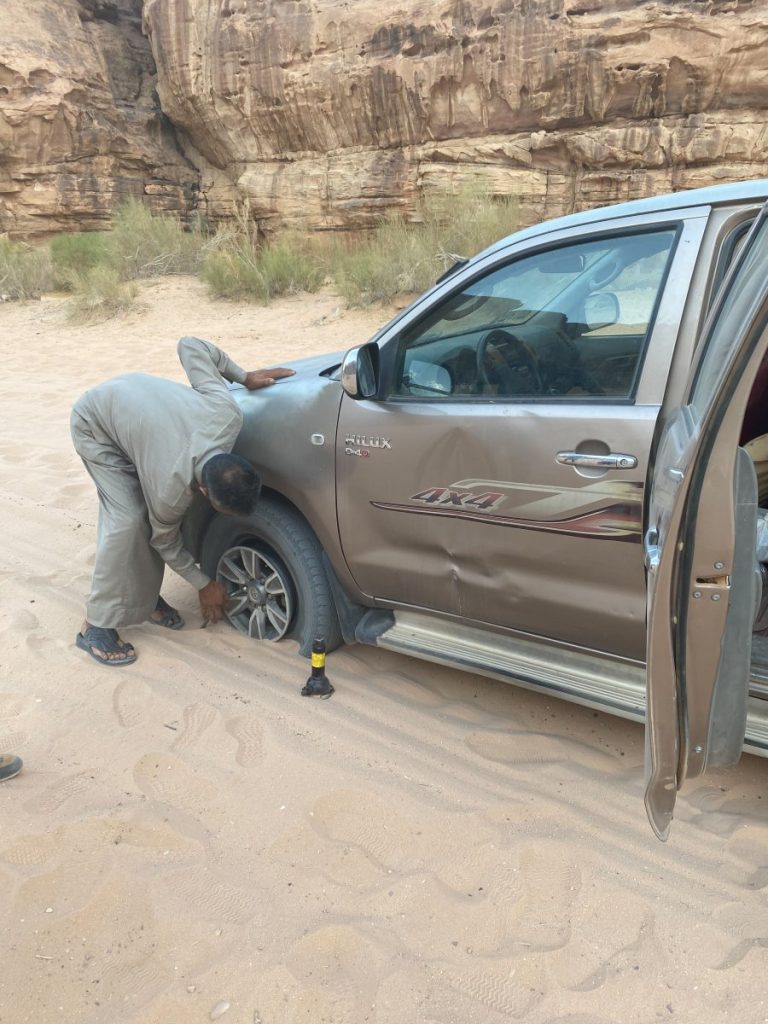
Taking into account the massive size of the country and the diversity of its attractions, renting a car is the most convenient way to navigate through the country at your own pace. Offering the flexibility to stay at historical sites or natural landmarks longer than a preset tour schedules, car rentals are often a good choice, especially if you enjoy the freedom of independent exploration.
Driving in Jordan is on the right side of the road, making it easier for most international tourists to adapt. However, driving in Amman, the capital city, might present some challenges due to heavy traffic and hectic city driving norms. But fear not, driving outside the city is generally much easier with well-marked routes and less traffic.
Rental car companies are available in masses in Jordan, including international and local options. Depending on the type and size of the vehicle you select, you can expect to pay between $25 to 50 per day.
Therefore, I would suggest Monte Carlo car rentals (A local Jordanian Rental agency) with an open heart, as my experience with them was terrific. They offer the lowest fares we could find in the country, and they even gave us more perks than what we’d asked.
It is also important to know that, in the case of Monte Carlo rentals, our EU driving licenses were enough. However, another car rental might ask for an International driver’s license. That’s something you’ll have to clarify with the rental of your choice beforehand.
2. By Bus
In addition to renting a car, there are several alternative modes of transport you can consider to navigate the wonders of Jordan. Tourism buses are a cost-effective and environmentally responsible option for travel. The JETT buses serve most major tourist destinations, with regular schedules and comfortable accommodations.
3. Taxis
Another convenient (but not budget-friendly) choice for getting around Jordan is shared taxis. These are usually minivans that accommodate multiple passengers, taking you to the desired location on the most popular routes.
If you prefer a more personalized and flexible travel option, consider hiring a private taxi. Even though it costs more than shared taxis or buses, it offers the advantage of customizing your route according to your convenience.
8 Tips for your Jordan Road Trip
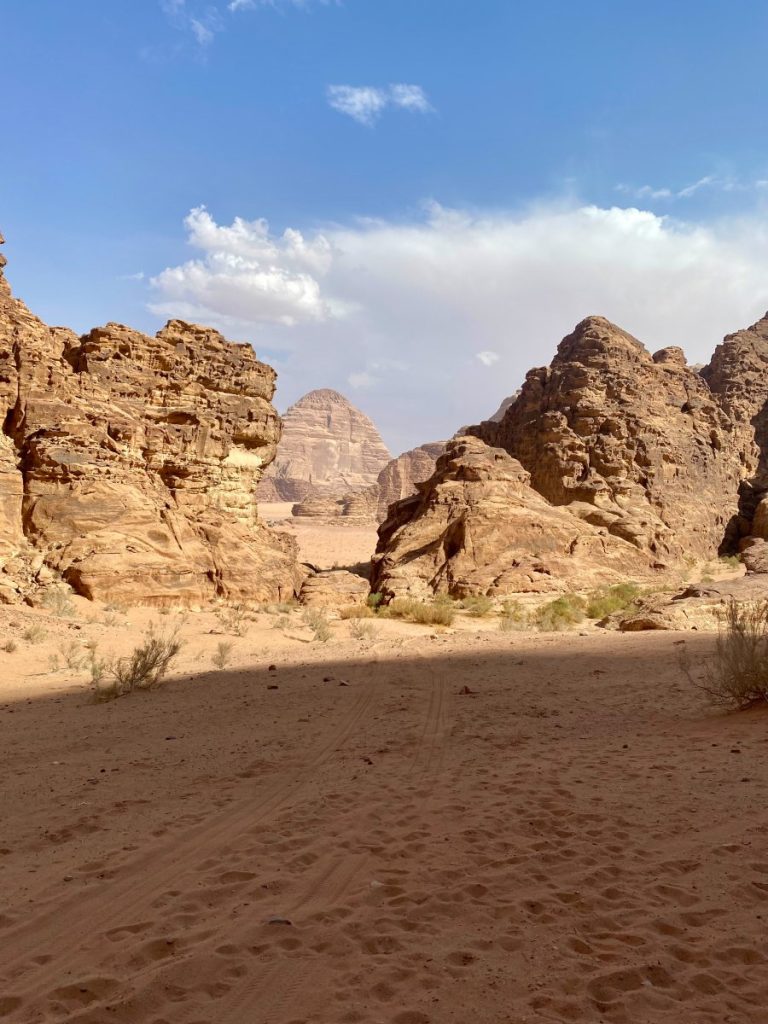
1. Plan your Trip in Detail
Jordan has a wide variety of attractions all around the country. The last thing you would like is to miss something because of bad planning. Be informed on how much time is ideal for every place and make sure everything is well-planned.
2. Rent a car with air conditioning
This applies especially if you are planning your trip in the Summer. The temperature in Jordan can exceed 40 degrees celcius in the Summer. So unless you want your fantastic road trip spoiled by the insufferable weather conditions, ask if the car you are about to rent is equipped with AC.
3. Obey the speed limits
While Jordan’s highways may pose a big temptation to increase the speed, you should always stay within 100 to 110 kilometers. You wouldn’t want to be fined in the middle of the desert by armed police or military officers.
4. Be careful in the cities
In crowded places like Amman, as there is too much traffic, there can be literal chaos. Traffic lights can sometimes be ignored, especially at nighttime. Ensure you control your speed and always be careful of other drivers’ mistakes. Better safe than sorry.
5. Be careful when passing next to large vehicles
This is a personal experience. Unfortunately, large vehicles, especially trucks, do not change their tires over time. Therefore, there is a high risk of tires exploding and hitting your car. This happened to us, fortunately, without causing any damage.
However, you will see many remnants of tires on the roads’ edges on your way, so be careful. This is something I wish I knew too when searching how to plan a trip to Jordan.
6. Let the more experienced be the driver (if possible)
An experienced driver (age limits vary on every rental) will need to pay less money on insurance and a smaller safety deposit. Please be aware that before you rent a vehicle, you must deposit an amount in the company’s account, which will be kept and returned once the car is returned.
7. Get Full Insurance Coverage
It didn’t happen to us, but we have heard stories of people having accidents on purpose with rental cars. That is why you should buy the full insurance package that covers extensive damage. However, please be aware that insurance does not cover minor damages. So watch out for minor accidents (e.g., breaking a mirror).
8) Gas Prices are the Same Everywhere
Gasoline has the same price everywhere, so don’t think “cheap”, and refill gas wherever and whenever you need it.
Can I drink the tap water in Jordan?
While it’s technically safe to sip tap water in Jordan, it’s generally not recommended for tourists, due to the different mineral composition that could upset your stomach.
The local population is accustomed to the water as they have been drinking it for a lifetime, but for visitors, sticking to bottled water is the safest option.
If you’re staying at a hotel, they’ll often provide bottled water either for free or for a very low price. Many restaurants will also offer bottled water, and it’s standard to have it readily available at tourist attractions.
If you want to take extra precautions, consider bringing water purifying tablets or a portable water filter. Alternatively, you could also boil tap water for at least one minute to kill any potential harmful bacteria or viruses.
Remember, being sufficiently hydrated, especially during the hot summer months, is vital for a comfortable and memorable trip to Jordan.
What are the most famous places to visit in Jordan?
1. Amman
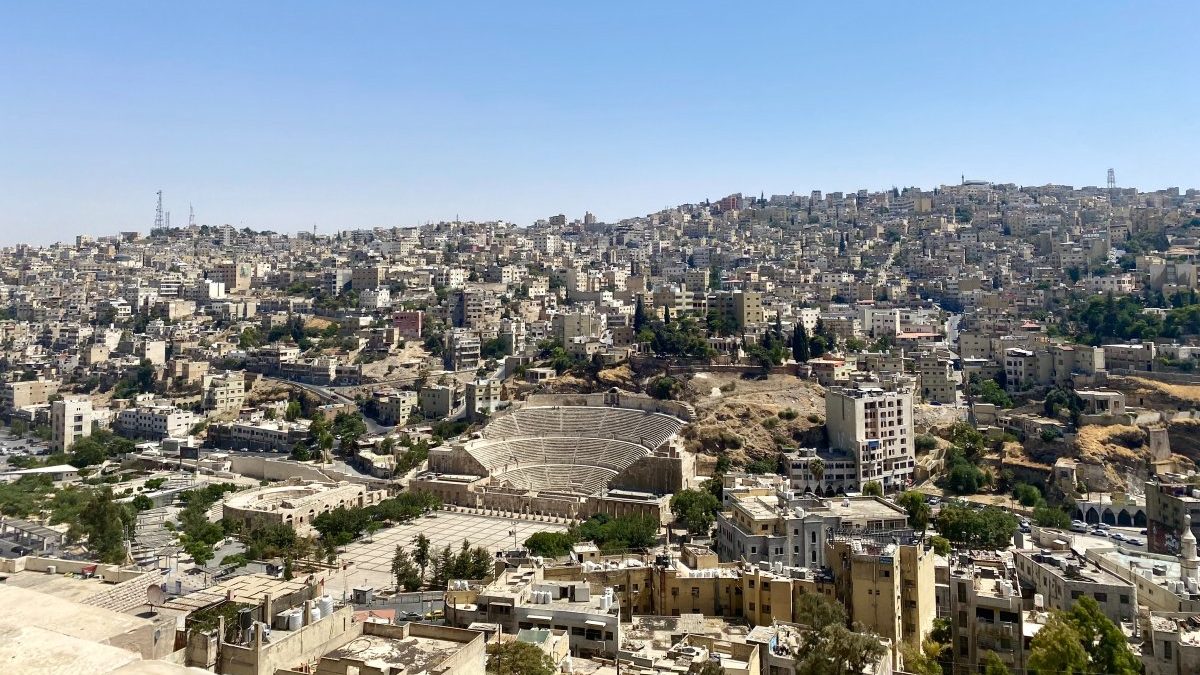
Starting your Jordanian journey, your first stop will likely be Amman, the country’s capital. With roots dating back to the Stone Age, the city proudly offers many historical sites, as well as trendy districts, filled with boutiques, cafés, bars, and restaurants.
From the ancient Roman Theater to the contemporary art galleries, Amman offers a unique mix of old and new that is sure to win you. For a more detailed guide on what to see, where to eat, and how to navigate this amazing city, you can read my Amman honest guide, where I explain why I fell in love with this city.
2. Jerash
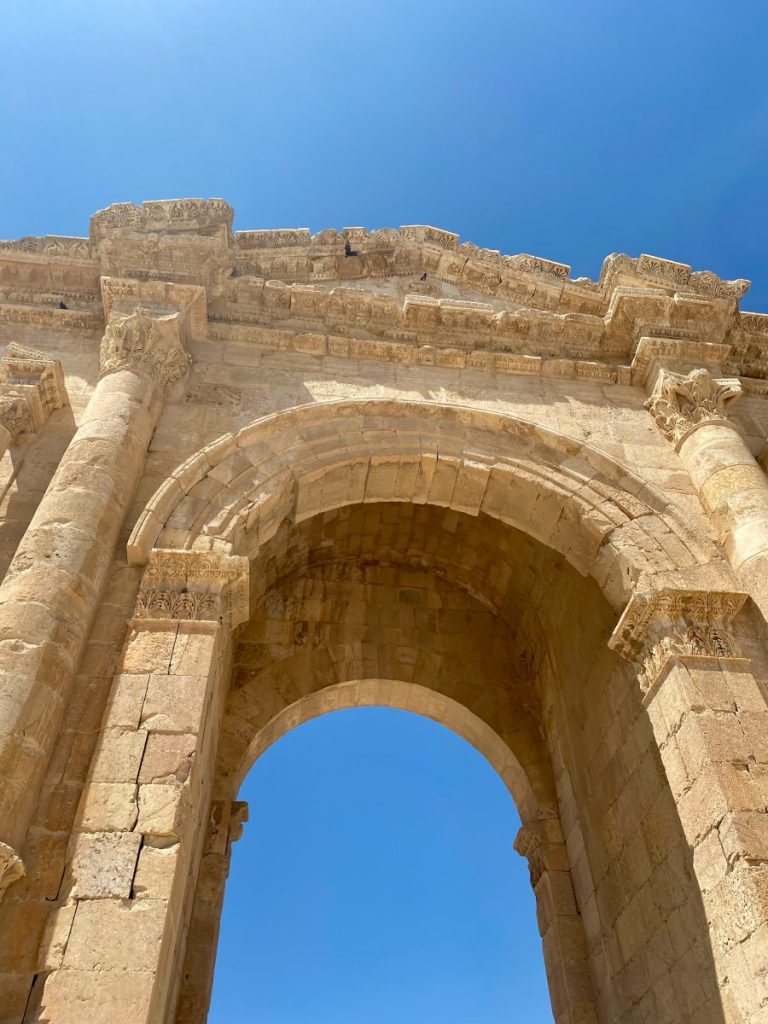
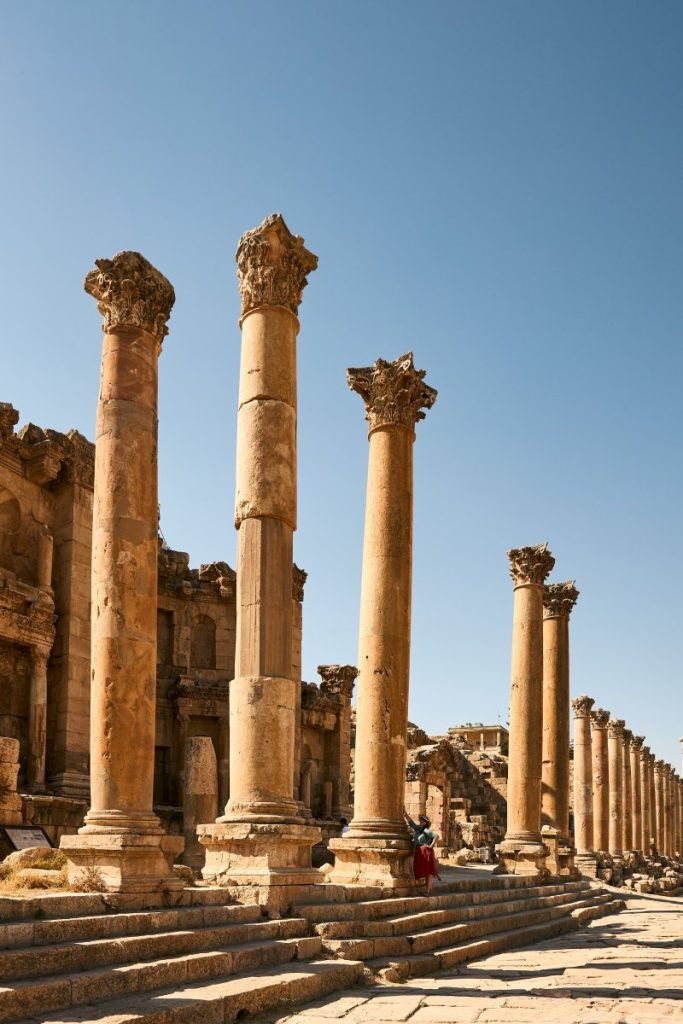
Jerash is a city located north of the capital, Amman. Once a thriving city from the classical era, it proudly stands as one of the most well-preserved Greco-Roman cities outside of Italy.
Jerash is famous for its impressive collection of ruins, which include the Hadrian’s Arch, the Temple of Artemis, and the Jerash Archaeological Museum. The city’s ruins are an exceptional example of Roman architecture, with colonnaded streets, hilltop temples, beautiful mosaics, and theatres.
How to Get There
Jerash is easily accessible from Amman. The distance between the two cities is approximately 48 kilometers, which can be covered in around 1 hour by car. The roads are generally in good condition and the route is well signposted.
If you haven’t rented a car, one of the most convenient ways of getting there is by hiring a taxi. This option provides more flexibility as you can travel at your own pace and make stops along the way. However, this is a very costly option and will set you back at least 40 JOD ($55).
Public transportation is also available, albeit less convenient. Busses depart from Amman North’s Bus Station to Jerash regularly throughout the day. The fare is 1JD one way. However, the buses don’t operate on a fixed schedule and they only leave when full, which may cause some delays.
Lastly, organized tours are another option. Many tour companies in Jordan offer day trips to Jerash from Amman. These tours often include a guide, transportation, and sometimes even meals. This can be a convenient option if you prefer a hassle-free experience.
The site
Your exploration begins at the Hadrian’s Arch, a massive gate erected in honor of the visit of Emperor Hadrian. From there, you’ll find your way through the Hippodrome, the social entertainment hub of the ancient city where horse races were held. It’s actually one of the smallest Roman hippodromes ever built, but it’s still an impressive sight, with space for 15,000 spectators.
Then, you’ll find yourself at the Forum, also known as Oval Plaza, a giant public square surrounded by a broad colonnade. It was the city’s main marketplace and a social gathering point. For me, this was the highlight of the site. The feelings of awe I felt there were unique.
Jerash is also home to two large theatres – the South and North Theatres. The South Theatre, which can seat more than 3000 spectators, is still used for performances today. The North Theatre is smaller but equally impressive, with its delicate stage decorations.
Lastly, don’t miss the Jerash Archaeological Museum. It houses a collection of artifacts found in and around the city, including coins, statues, and sarcophagi. Many of the artifacts date back to the Bronze Age! The museum offers a deeper understanding of the city’s history and I am sure you’ll love it!
Tickets
In terms of practicalities, the site opens daily at 8 AM and closes at 5 PM in winter, and 7 PM in summer. The entrance fee is 10 JD for foreign visitors, but if you have the Jordan Pass, entry is included. Remember to wear comfortable shoes, bring a hat for shade, and carry a bottle of water to stay hydrated as you traverse this ancient city.
The Jerash Festival
The city is also home to the annual Jerash Festival, a celebration of Jordanian and Arab culture that features music, dance, and theatrical performances. This event attracts thousands of visitors each year, further enhancing Jerash’s cultural significance.
3. Petra
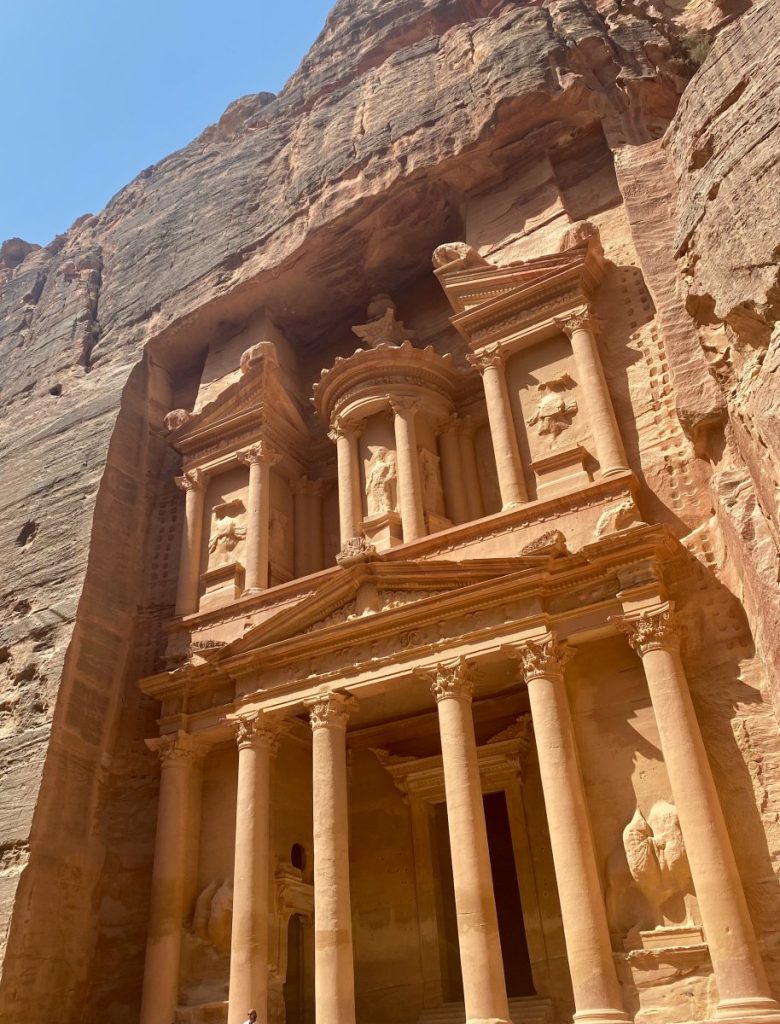
Recognized as one of the 7 new wonders of the world and a World Heritage Site by UNESCO, Petra is a historic archaeological city located in southern Jordan. It is half-built, half-carved into the rock, and is surrounded by mountains.
It was once the capital of the Nabatean kingdom, and its history dates back to as early as 312 BC. The city was an important crossroads between Arabia, Egypt, and Syria-Phoenicia. You will surely have seen photos around the Treasury, arguably the most iconic structure in Petra.
While most people hail this place (and I can totally understand why), the true Petra experience is a bit different and less glamorous than what you might expect. I explain more on why I’d not visit Petra again in my separate guide. I believe it’s worth knowing the other side of it.
4. Wadi Rum (The Valley of the Moon)
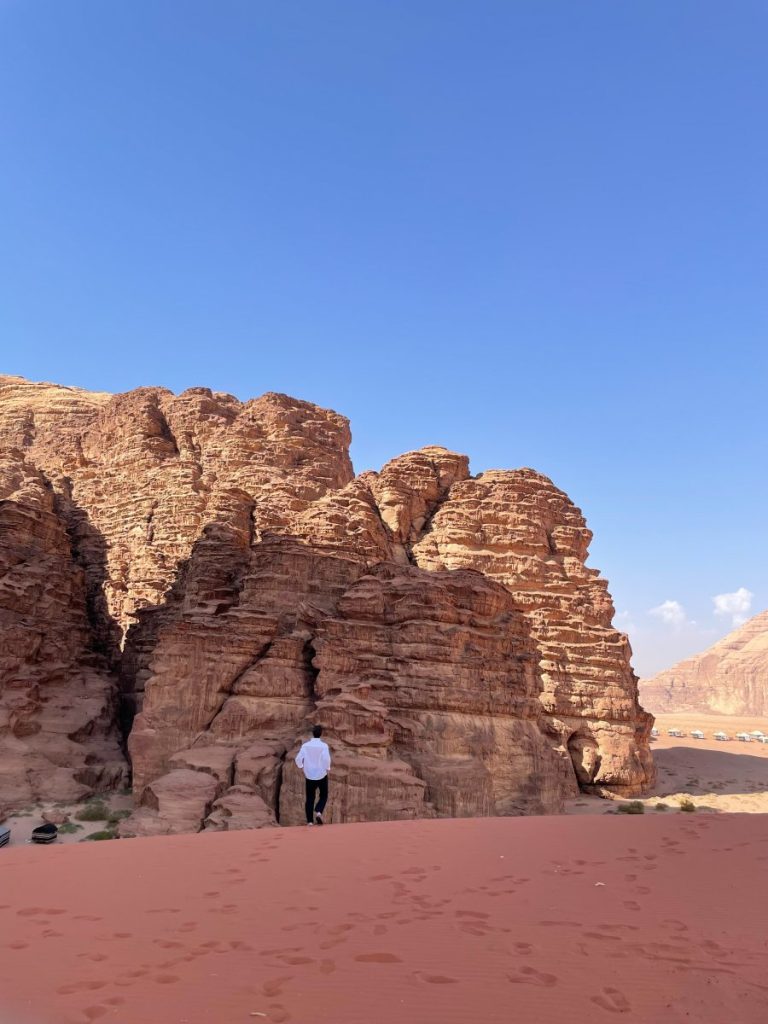
Few places in the world hold such a sense of wonder and awe as Wadi Rum, Jordan. located in the middle of the Jordanian desert, it’s a place of extreme beauty, where you’ll get the feel of being on another planet. In fact, many science fiction movies like “the Martian” have been shot there.
For me, Wadi Rum is the highlight of the entire country of Jordan. There are so many amazing things you can do there, from stargazing to camping with beduins and extreme sports. If you need to know more about this majestic place, you have to read my separate guide on it. I promise you won’t regret it!
5. The Dead Sea
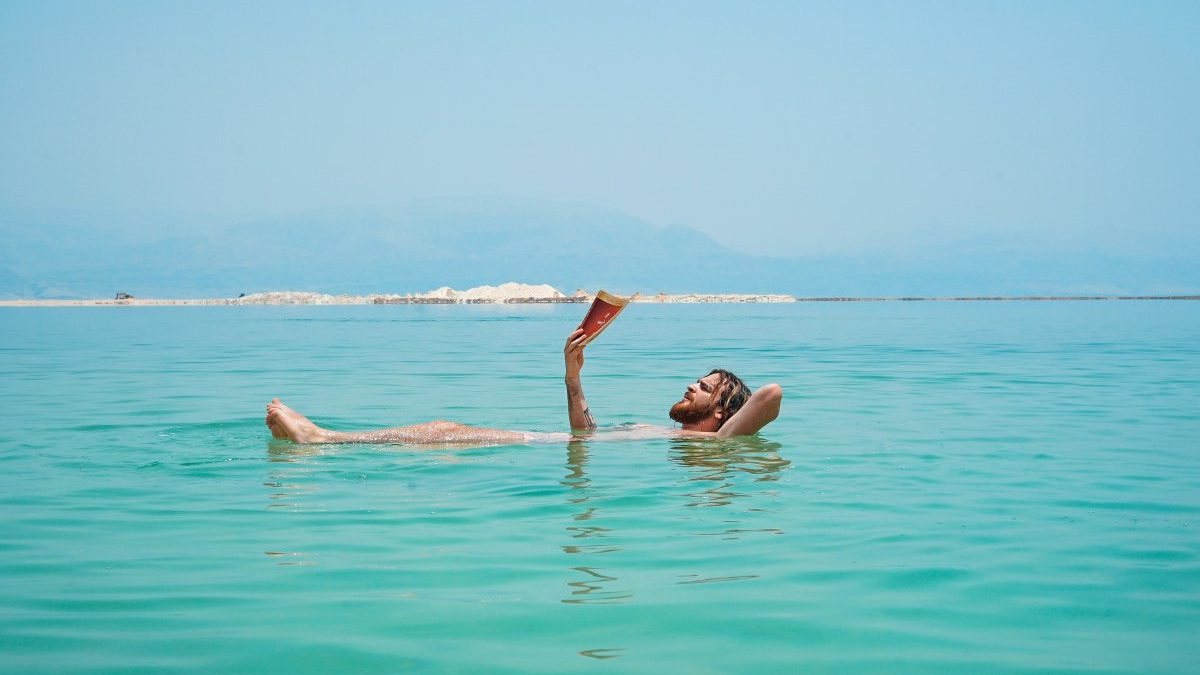
Located between Jordan to the east and Israel and Palestine to the west, the Dead Sea is one of the most intriguing phenomena on Earth.
The high salt concentration of the Dead Sea makes it a unique experience. Due to the high salinity, it’s virtually impossible to sink in the water, allowing you to float effortlessly. This unique feature, along with the water and mud’s therapeutic purposes, has made the Dead Sea a popular spot for tourists seeking relaxation and a unique swimming experience.
However, despite the, undeniably beautiful sunsets and unique ability to float unaided, experiencing the Dead Sea is not as fun and nice, as everyone likes to tell.
If you’re interested in a more detailed account of my experience at the Dead Sea, including the highs, the lows, and everything in between, then I encourage you to check out my dedicated piece on it.
There, I explain why my visit to the Dead Sea wasn’t as enjoyable as I wanted, along with why I’d never visit it again.
6. The Baptism Site of Jesus Christ

The Baptism Site of Jesus Christ is believed to be the place where John the Baptist baptized Jesus Christ, one of the most important moments in Christian history. Located on the eastern bank of the Jordan River, the site stands approximately 10 kilometers north of the Dead Sea and 40 kilometers west of Amman, the capital city.
It was officially opened to the public in 2002, and since then, it has become a major pilgrimage site for Christians worldwide. It includes the remains of several early Christian churches, chapels, and monasteries. There are also baptismal pools where pilgrims can perform baptism rituals.
Along the way, there are several points of interest, including the Church of the Trinity and the Chapel of Saint John the Baptist.
As for the cost, the entrance fee to the Baptism Site is 12 Jordanian Dinars (around 17 USD) per person. This fee includes a guided tour within the site, as the area is a protected archaeological site and visitors are not allowed to wander around on their own as the site is located right in the Jordanian-Israeli border.
While it is a place of great historical significance, I found the tour short, commercialized, and not as attractive as it could be. But, again, this is my own personal opinion.
7. Wadi Mujib
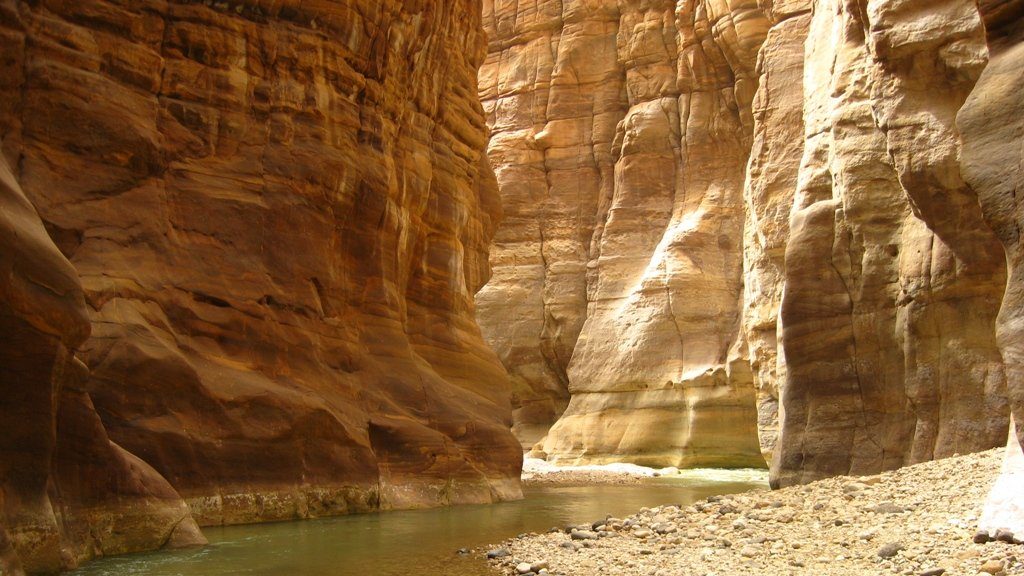
Wadi Mujib is a gorge that runs through the mountains of Jordan into the Dead Sea, creating a unique biosphere. The reserve is often referred to as the ‘Grand Canyon of Jordan’ due to its dramatic landscapes.
The reserve offers a variety of activities for adventure seekers. Hiking through the Siq Trail is a popular choice, where you can walk through the river, climb over rocks, and even slide down natural water slides. The trail leads to a large waterfall, a perfect spot for a refreshing dip. For those seeking a more challenging experience, the Ibex trail offers a strenuous hike with rewarding views.
Wildlife enthusiasts will appreciate the reserve’s rich biodiversity. It’s home to species such as the Nubian ibex, Syrian wolf, and over 200 species of birds. The reserve also plays a crucial role in conserving the Dead Sea, as the Mujib River is one of the main tributaries supplying it with freshwater.
However, you should note that the reserve has specific opening times and seasons. The Siq Trail, for instance, is only open from April to October due to the risk of flash floods in other months. However, i would very much recommend this one!
8. Aqaba
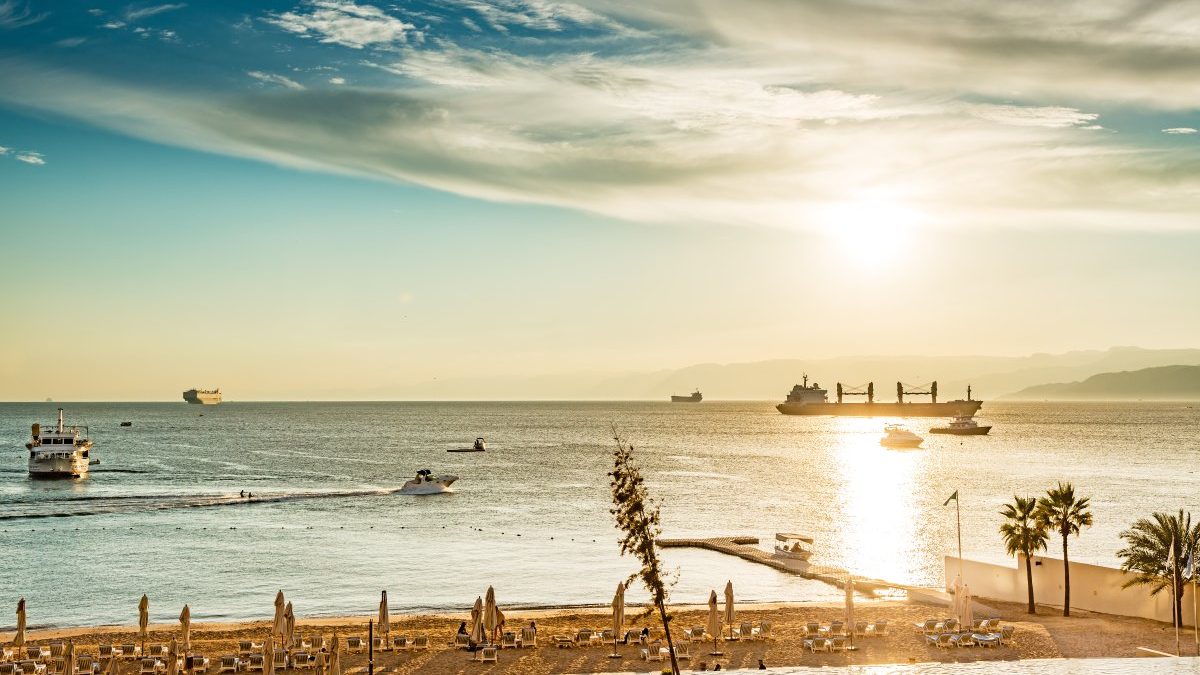
Aqaba is a city that sits along the northeastern edge of the Red Sea. It’s known for its warm, clear waters, which make it a popular destination for diving and snorkeling. The city’s marine life is diverse, with over 500 species of fish and other sea creatures inhabiting the waters.
Aqaba is also rich in history, with numerous historical sites and landmarks. One of the most notable is the Aqaba Fortress, a 14th-century Mamluk castle that played a significant role in the Arab Revolt during World War I. The Aqaba Archaeological Museum, located within the fortress, houses a collection of artifacts dating back to the 7th century.
Another major attraction in Aqaba is the Aqaba Marine Park, a protected area that spans over seven kilometers of coastline. The park is dedicated to conserving the marine environment and its biodiversity. Visitors can enjoy guided snorkeling and diving tours, or simply relax on the park’s beautiful beaches.
5-Day Jordan Itinerary
While 5 days are not enough to explore everything the country has to offer, they will be enough to get a good first taste of Jordan. However, the difficulty of visiting Wadi Rum in this time frame would be a big miss!
- Day 1: Exploring Amman – Overnight in Amman
- Day 2: Visiting Jerash, Drive to Wadi Musa (Petra) – Overnight in Wadi Musa
- Day 3: A Full-day of Exploring Petra – Overnight in Wadi Musa
- Day 4: Driving to the Dead Sea, swimming and relaxing – Overnight in the Dead Sea
- Day 5: Visiting the Baptism Site of Jesus Christ on the way back to Amman, shopping, and Return Flight
7-Day Jordan Itinerary
7 days in Jordan would be a much better period, as It will be enough to visit the Northern and Central parts of the country. This itinerary is designed to cover visits to Jordan’s most famous destinations, while also allowing for some flexibility in the time dedicated to each place.
- Day 1: Exploring Amman – Overnight in Amman
- Day 2: Visiting Jerash, Drive to Wadi Musa (Petra) – Overnight in Wadi Musa
- Day 3: A Full-day of Exploring Petra – Overnight in Wadi Musa
- Day 4: Driving to Wadi Rum, First Round of Activities – Overnight in Wadi Rum
- Day 5: Full-day of Activities in Wadi Rum – Overnight in Wadi Rum
- Day 6: Driving to the Dead Sea, swimming and relaxing – Overnight in the Dead Sea
- Day 7: Visiting the Baptism Site of Jesus Christ on the way back to Amman, shopping, and Return Flight
10-Day Jordan Itinerary
10 Days in Jordan would be the ideal amount of time. You’ll be able to visit the entire country from North to South, while also allowing time to enjoy all the major attractions it has to offer.
- Day 1: Exploring Amman – Overnight in Amman
- Day 2: Visiting Jerash, Drive to Wadi Musa (Petra) – Overnight in Wadi Musa
- Day 3: A Full-day of Exploring Petra – Overnight in Wadi Musa
- Day 4: Driving to Wadi Rum, First Round of Activities – Overnight in Wadi Rum
- Day 5: Full-Day of Activities in Wadi Rum – Overnight in Wadi Rum
- Day 6: Drive to Aqaba – Overnight in Aqaba
- Day 7: Full-day of Exploring Aqaba – Overnight in Aqaba
- Day 8: Driving to the Dead Sea, swimming and relaxing – Overnight in the Dead Sea
- Day 9: Exploring Wadi Mujib, Afternoon in the Dead Sea – Overnight in the Dead Sea
- Day 10: Visiting the Baptism Site of Jesus Christ on the way back to Amman, shopping, and Return Flight
How to Plan a Trip to Jordan – Final Thoughts
Your journey through Jordan will undoubtedly be a memorable one – a fascinating mix of history, culture, and awe-inspiring beauty. This travel guide should serve you well as a starting point for planning your trip and ensuring you make the most of your journey through the fascinating landscapes and cities of Jordan.
Planning your trip carefully will make your trip all the more worthwhile. Remember, Jordan is a country best taken at a slower pace, with plenty of time to absorb what Jordan has to offer!




